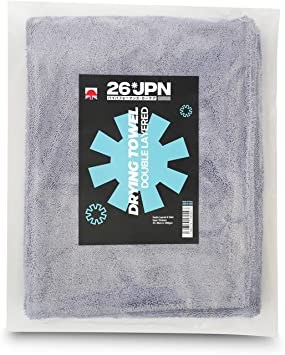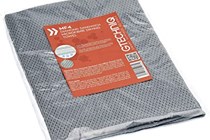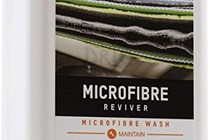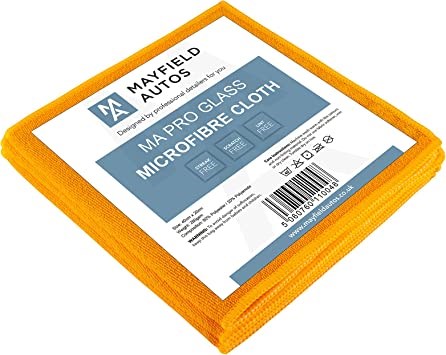Drying your car properly is just as important as the washing process. It doesn’t matter how good the shampoo you use is, if you don’t dry it properly you’ll get water stains or risk scratching and marring paintwork.
RELATED: The best quick detailers for keeping your car clean between washes
Microfibre cloths are ideal for a load of car cleaning jobs. From the usual drying of bodywork, microfibre cloths can be used for buffing, detailing, removing excessive cleaning products, interior cleaning and streak-free glass cleaning. The reasons microfibres are such a good choice for car cleaning are:
– They’re incredibly soft and offer a minimal chance of scratches occurring
– They’re highly absorbent, some microfibres can absorb six times their weight in water, making them ideal for drying duties
– They feature a positive charge that will attract small bits of dirt and ensure they stick to the cloth making them effective cleaners
– They’re a cost effective and reusable way of cleaning, saving you cash.
With this in mind, we’ve put together the ultimate guide to microfibres and car cleaning, breaking down the different types and their uses. Make sure to for our favourite microfibre cloths.
Standard weave
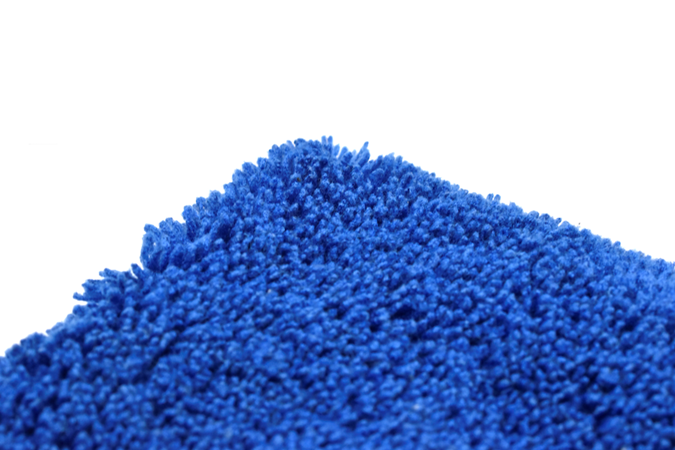
All microfibres are made up of really small fibres (less than 10 microns in diameter), but the type you should be looking for are split microfibres woven in a loop. These have a soft, fleecy texture that’s perfect for absorbing liquid and are designed to be reusable. Almost all car cleaning cloths feature split microfibres so the main distinction you should know is GSM.
GSM: what does it mean?
Microfibre cloths are rated in GSM (grams per square metre) which often translates directly into the density of the fibres, also known as the pile. There are three rough distinctions for microfibre piles, each with a designated use.
Short pile
These are the flattest of all microfibre cloths and have a GSM of 200-400. They’re not the most absorbent of cloths and aren’t designed for use on the bodywork. What short pile microfibre cloths are good for includes drying glass for a streak-free finish, buffing bodywork with waxes and sealants, and removing excess cleaning products too.
Best short pile microfibre cloth
These are the jack-of-all-trades microfibres, with a GSM of 400-700. The pile is short enough to happily add and remove waxes and sealants, but absorbent enough to properly dry a car. If you’re in the market for your first proper microfibres, this is the best place to start.
Autoglym Instadry
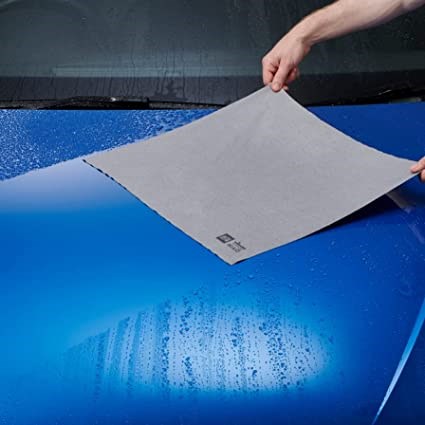

Anything with a GSM over 700 is a long pile microfibre. The fluffiest and thickest of all microfibres, these are incredibly soft and can be used on even the most delicate of surfaces. They’re ideal for drying wet paintwork as they’re super absorbent and have a natural weight that makes absorbing water really simple. That being said, they aren’t very good for buffing or removing products because the pile is too long. The highest GSM we’ve seen was a 1400gsm Hydro Hoover but anything above 700GSM should be more than acceptable for bodywork.
Waffle-weave
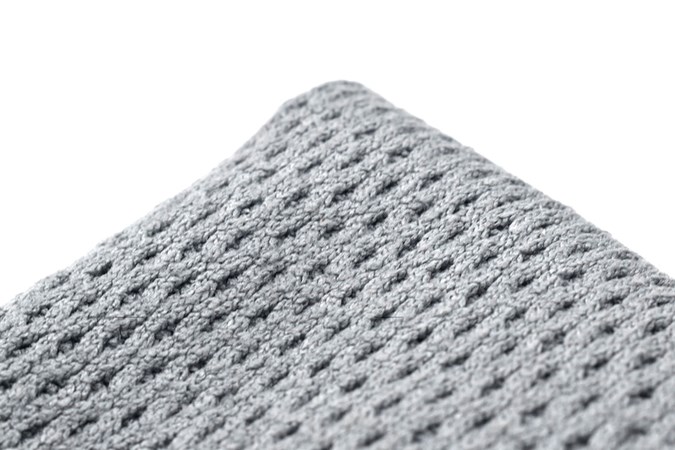
Still using spilt microfibres, waffle-weave microfibre cloths look like they’ve been knitted and are a clever development in microfibre design. It’s absorbent which makes it great for drying bodywork, but it also has the properties of short pile microfibre cloths that make it a good choice for glass and buffing.
What else you should look for when shopping for microfibre cloths
Edges
The edges of the cloth need to be designed to not scratch your car’s paint. What’s the point of spending money on a really soft cloth if the edges have seems reminiscent of a cheap pair of jeans?
There are three types of edge that you should look for; silk edged, edgeless or rolled. Each one is designed to not scratch your paintwork and is an indication of quality.
Size
Size is another important consideration. Long pile cloths suit being larger as the surface area which drying quicker, even if these cloths may struggle in smaller spaces. Smaller sizes are better for short-pile cloths as their applications don’t require a big size. Look for 40 x 40 cm for shorter piles and as big as you want for long pile cloths.
How to dry your car properly with a microfibre cloth
Believe it or not but the technique is an important part of using a microfibre cloth. While it might be tempting to scrunch your cloth up and rub it over your car, you won’t be getting the most from your cloth.
Instead, we recommend opening your cloth opened up and draping it over your car so you maximise its surface area. After this opinion differs, with some advocating gently pulling on the cloth to remove water while others say to pat the cloth before removing it. It’s a personal preference and both will be effective at drying your car.
Beyond microfibre cloths
Because of its dirt-trapping qualities and minimal scratch risk, there are a whole host of other car cleaning products that use microfibre. We’ve collected a sample right here, along with our top choice of each.
Applicators
The soft texture of microfibre makes it ideal for adding products to your car without doing any damage. Microfibre applicators are easy to clean and won’t do any damage to your paintwork as you apply waxes, sealants and even trim restorer.
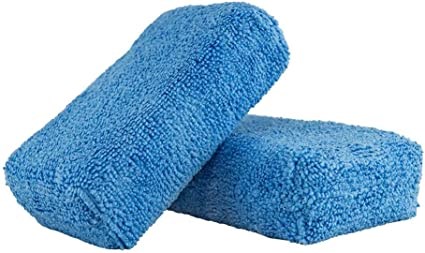

Wash mitts
Hands down the best way to wash your car, wash mitts are the perfect replacement for the trusty sponge. Sponges trap grit against your bodywork which can cause nasty scratches which makes the soft, long microfibres of a wash mitt perfect as they pull grit away from your bodywork. They also allow car shampoo to lather up nicer, meaning you get more for your money.
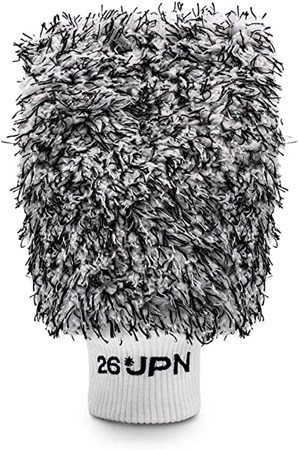

Sponges
A sponge wrapped in microfibre, that’s exactly what a microfibre sponge is. And despite sounding promising for car washing, it suffers from the same issues as normal sponges. The microfibres simply won’t be thick enough to move the dirt away from the bodywork, meaning there’s still a fair risk of scratches occurring.
Streetwize – Extra Tough Microfibre Car Wash Sponge
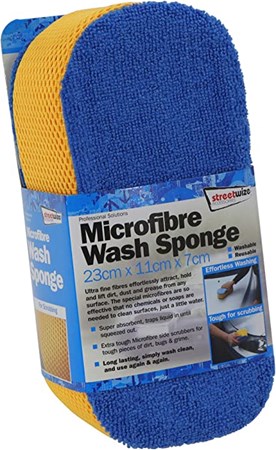

Polishing pads
The latest venture for microfibre has been into polishing pads. While wool and foam pads are still effective, the dense nature of microfibre polishing pads means they heat up quicker and produce more friction, meaning polishing becomes a quicker task. Best left to those with a lot of polishing experience.
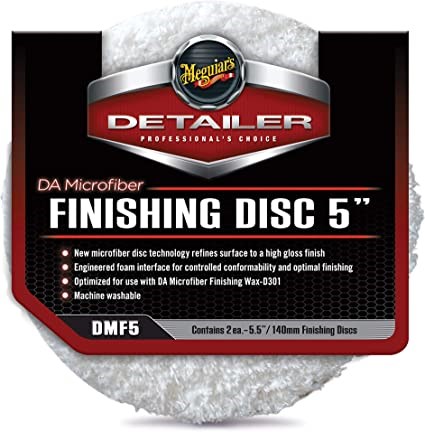

How to clean microfibre
As you clean your car, the microfibres will inevitably become dirty either from water, cleaning products or muck. It’s important to understand how to properly wash your microfibres once they are mucky because you can ruin how effective they are if you aren’t careful.
Sign up to the Parkers Newsletter to keep up to date with more of the latest reviews, news, and recommendations from the Parkers team.
Just so you know, whilst we may receive a commission or other compensation from the links on this website, we never allow this to influence product selections – read why you should trust us
Just so you know, we may receive a commission or other compensation from the links on this website - read why you should trust us.


